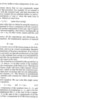To further explore this though isn't it more about total tractive effort than raw horsepower?
Tractive effort is starting/hauling tonnage. Horsepower is what accelerates that tonnage.
I know HP is important, but my understanding is that the RR's discovered during the 1990's HP race that it wasn't the ace everyone thought.
Not really. High HP is important, especially for inter-model freight, that is time sensitive, and thus high train speed (70 MPH) is important over long distances.
Hence why the remaining AC6000's, SD80's, and SD90's have been rebuilt as approximately 4300-4400 HP units.
Sort of, yes, however the Conrail SD80MAC units, at 5000 HP were deemed quite successful and NS still uses them, to my knowledge. The 6000 HP units were NOT reliable and wound up being just too much HP in a single unit, plus they were VERY heavy.
It would make sense to me tractive effort is what gets a train moving and helps up up hill etc (like torque) and HP is more or less what keeps them at speed.
Correct.
Would it be safe to assume on a flat and level grade that once started you could actually shut units down once moving at speed? I know this probably isn't practical or efficient, just asking a theoretical question.
What you describe can, and is, accomplished with todays modern computer controlled high HP units.
I may be completely off base or wrong in my post here, just further opening this discussion up as it is very interesting.
You done good!






